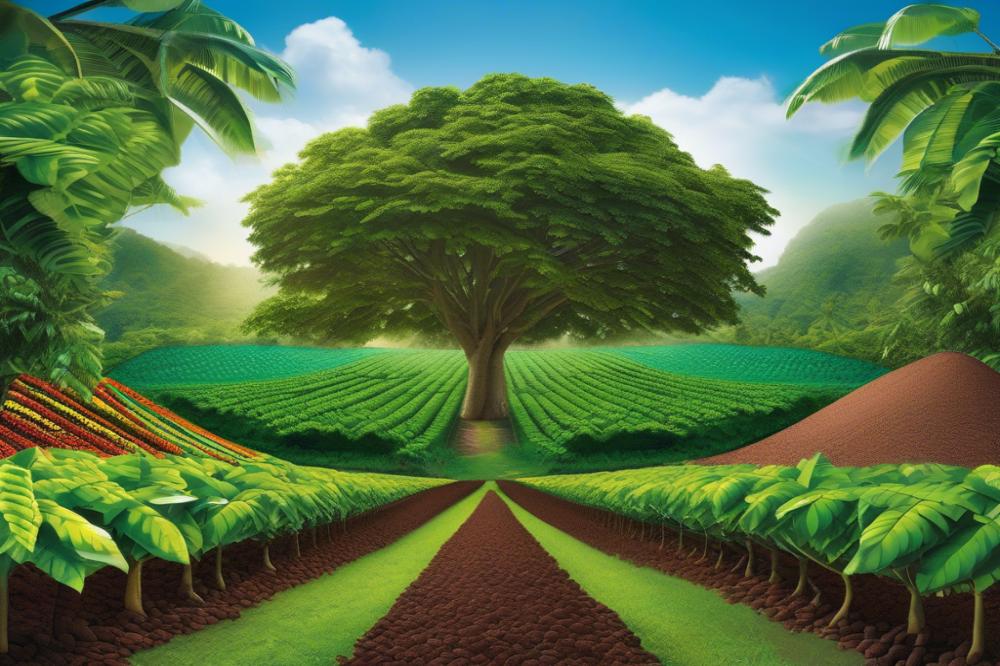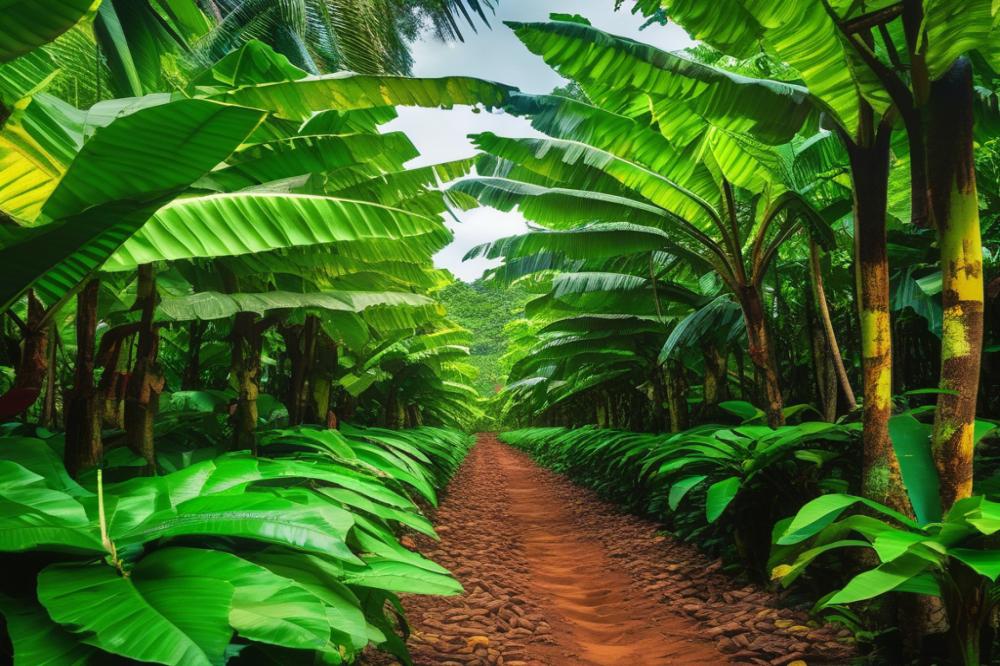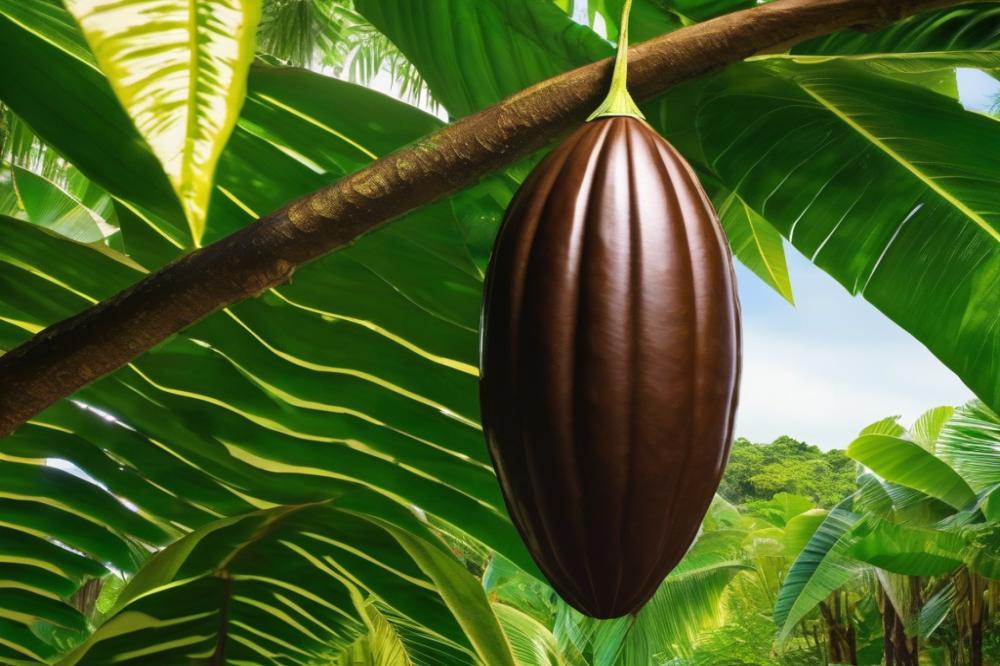The Lifecycle of a Cocoa Tree: From Seed to Harvest
Chocolate lovers across the globe often take for granted the complex journey of cocoa beans. The process begins long before the sweet treat arrives at stores. It kicks off with the cocoa seeds and involves numerous stages before the beloved confection makes its way to eager consumers.
Understanding this journey is essential. Knowing how Cocoa Trees grow provides valuable insight into chocolate’s true origins. The cultivation of these trees occurs in tropical climates. They require specific conditions such as consistent warmth and humidity to thrive. This environment influences every aspect of production, from germination to harvest.
During the Cocoa Lifecycle, various stages unfold. After planting, cocoa seeds sprout and develop into seedlings. These young plants eventually grow into mature trees that bear cocoa pods. Each pod contains precious beans crucial for chocolate production. Enthusiasts might be surprised to learn that the journey doesn’t end with mere harvesting. The beans must undergo fermentation and drying to develop the rich flavors we associate with chocolate.
Sustainable farming practices are also vital. They help maintain the health of the cocoa ecosystems while promoting ethical sourcing. Focusing on these methods can benefit both farmers and consumers. Thus, appreciating the cocoa tree’s lifecycle allows for a deeper connection to the foods we enjoy.
The Cocoa Tree: From Seed to Growth
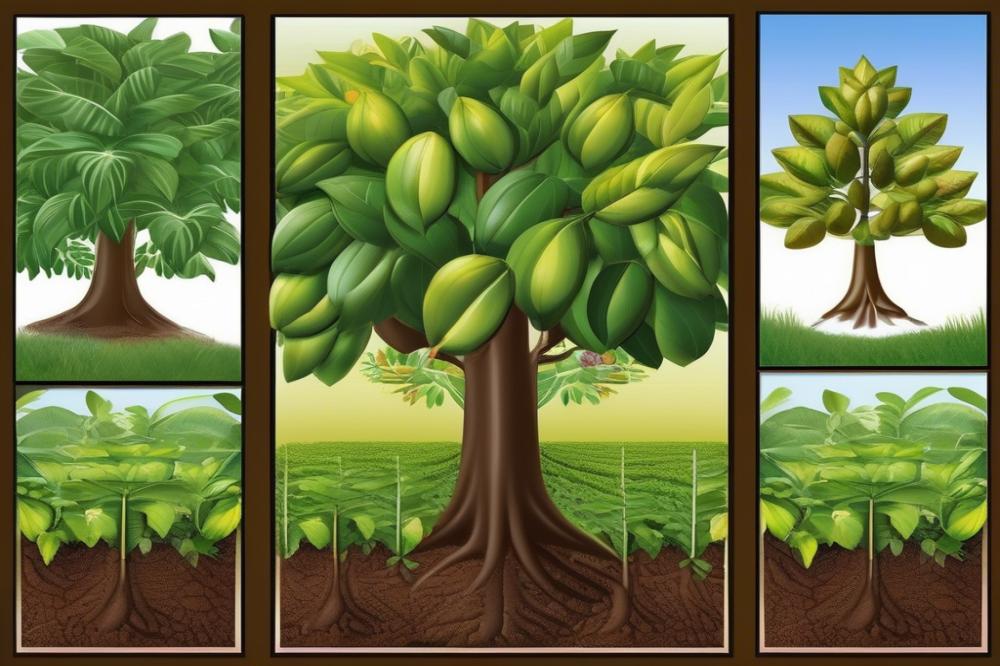
Cocoa seeds are the starting point of a remarkable journey. These seeds are small, oval-shaped, and have a hard outer shell. Inside, they contain the precious cocoa that is later transformed into chocolate. Their outer coating protects them as they begin the germination process.
Germination Process and Optimal Conditions
Germination occurs when the seed absorbs enough moisture. A warm, humid environment is essential for this to happen. Ideally, temperatures should range between 25 to 30 degrees Celsius. The process usually takes about two to three weeks. During this time, the seed will sprout roots and a small stem.
Role of a Tropical Climate in Cocoa Tree Growth
Tropical climates play a crucial role in the growth of Cocoa plants. These trees thrive under specific conditions, including consistent rainfall and ample sunlight. Regions near the equator, with their rich biodiversity, provide the perfect habitat. Nutrient-rich soil helps support healthy growth. Sustainable farming practices also enhance the ecosystem, ensuring a balance between cultivation and nature.
Timeframe for Seedling to Mature Tree
A seedling takes about 3 to 5 years to grow into a mature tree. Once established, it can produce cocoa pods for around 20 to 30 years. Each pod contains multiple seeds, which can be harvested and processed. After harvest, fermentation and drying are vital for developing the distinctive flavors of chocolate production. Cultivators must monitor the trees closely to maximize yield and maintain quality.
Cultivation Practices for Cocoa Trees
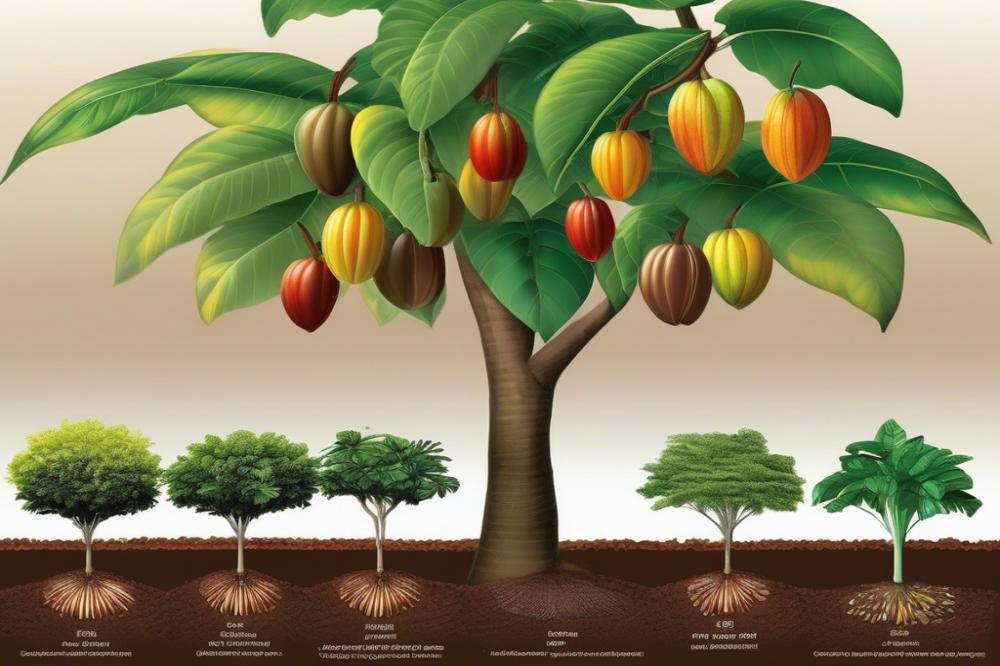
Growing cocoa begins with careful methods of planting cocoa seeds or seedlings. Farmers often choose the right season for planting. Timing plays a vital role. Warm temperatures and moisture help with germination, leading to successful growth.
Soil quality is another crucial factor in cocoa cultivation. Nutrient-rich soil supports the health of the plants. Farmers test their soil regularly to determine its pH and nutrient levels. Good management practices can enhance soil fertility. This step also helps in retaining moisture during the dry season.
Sustainable farming practices are becoming more popular in cocoa cultivation. Many farmers are turning to methods that protect the environment. For instance, intercropping with other plants can increase biodiversity. This approach helps prevent soil erosion and promotes a balanced ecosystem.
Pest and disease management is essential for the health of cocoa trees. Farmers may use natural and chemical solutions to combat these threats. Monitoring for pests regularly can help catch problems early. Additionally, organic methods, such as introducing beneficial insects, can aid in managing these challenges.
Regular maintenance practices also contribute to better yield. Pruning trees allows for better air circulation and sunlight exposure. These actions encourage a healthy crop. Proper care during the flowering stage is important because it directly influences the development of cocoa pods.
The entire growing cycle leads up to the harvest. When ripe, cocoa pods are cut from the trees by hand. Afterward, the pods are opened to extract the cocoa beans. Fermentation of these beans is critical. This process develops the flavors needed for chocolate production.
Drying the beans is another step that cannot be overlooked. It helps reduce moisture and prepares the beans for storage. Proper drying techniques play a significant role in flavor and quality.
The Development of Cocoa Pods

Life Cycle of Cocoa Pods from Flowering to Maturity
Cocoa pods begin their journey as beautiful blooms on the cocoa tree. These flowers are small and delicate, often overlooked. Pollination is essential; tiny insects, especially midges, are responsible for this crucial process. Once pollinated, the flowers slowly transform into fruit, known as cocoa pods. This transformation takes time, often ranging from five to six months. During this period, the pods develop and swell, ultimately bursting with potential.
Factors Affecting Pod Development
Several factors play a significant role in the growth of cocoa pods. Climate is one of the most critical aspects. A warm, tropical environment is ideal for cocoa cultivation. Adequate rainfall also supports healthy growth during dry seasons. Besides weather, soil quality influences pod development significantly. Nutrient-rich soil promotes robust growth. Pests and diseases can pose threats too. Farmers must monitor their crops closely. Sustainable farming practices help mitigate these risks, creating a healthier ecosystem.
Typical Growth Stages of Cocoa Pods
Cocoa pods undergo several distinct growth stages. Initially, pods start as small, green structures. They gradually enlarge and change color as they mature. At around three months, they turn from green to yellow or purple, indicating ripeness. This process is crucial for determining when to harvest. Farmers rely on these color changes to guide them. Once fully matured, the cocoa pods are ready for the next phase. Harvesting is the gateway to chocolate production. After picking, the pods undergo fermentation and drying, essential steps for developing rich flavors.
Creating a successful cycle of growth in cocoa farming takes dedication and awareness. Understanding each stage helps farmers make informed choices, paving the way for better yields. The journey from cocoa seeds to harvested pods is a fascinating one that impacts the global chocolate industry.
Harvesting Cocoa Pods
Timing of harvest for optimal flavor and quality
Picking cocoa pods at the right time is essential for flavor. Pods that are fully mature yield the best cocoa seeds. Farmers typically check the color and size of the pods. A pod that turns a deep yellow to orange indicates ripeness. Harvesting too early results in less flavor. Pods left too long on the tree may spoil. Timing is critical, especially in a tropical climate where growth is rapid. An accurate assessment can boost the final quality of chocolate production.
Techniques for harvesting cocoa pods
Various methods exist for gathering cocoa pods. Handpicking is the most common approach. Workers use machetes to cut the pods from the branches. This technique minimizes damage to the tree and surrounding fruit. Another option is to use poles to knock pods down. Although this can be faster, it may lead to injuries and bruising on the pods. Once collected, pods must be processed quickly. Fermentation and drying follow soon after harvest for optimal results.
Labor requirements and community impact
Harvesting cocoa is labor-intensive and requires many hands. Most farms rely on seasonal workers. Families often join together during harvest time. This not only provides income but strengthens community bonds. Sustainable farming practices can help improve local economies. By focusing on ethical methods, farmers can attract better prices. Support for local cooperatives boosts the livelihoods of many. Cocoa farming impacts lives far beyond just crop production. The need for conscientious practices remains a priority in ensuring that communities thrive.
Post-Harvest Processing
Fermentation Process and Its Importance for Flavor
Cocoa seeds undergo fermentation after being removed from their pods. This stage is crucial for developing the rich flavors found in chocolate. During fermentation, the seeds are placed in shallow containers, often covered with banana leaves. Microorganisms break down the sugars in the seeds, creating heat and promoting chemical changes. Without this step, cocoa would taste bitter and unappetizing.
This process lasts about five to seven days. Factors such as temperature and humidity play a significant role in determining the final flavor profile. Higher temperatures can enhance fermentation, leading to a more pronounced taste. Farmers must carefully monitor their cocoa seeds to achieve the best results. The transformation that occurs during this time is vital for quality chocolate production.
Drying Methods and Factors Influencing Drying Quality
After fermentation, drying is the next step. This process removes excess moisture from the seeds. Moisture levels must drop to around seven percent for optimal storage. Various methods exist for drying cocoa. Sun drying is popular in tropical climates, where sunlight is abundant. Farmers spread the seeds out on mats and turn them regularly. This allows for even drying and prevents mold.
However, weather can impact this method. Rainy seasons may force growers to use artificial dryers. These can provide more controlled conditions. Regardless of the method, attention to drying quality is paramount. Poor drying can lead to spoiled cocoa and affect flavor in chocolate. Growers must balance effective moisture removal with maintaining the seed’s quality.
How These Processes Prepare Cocoa for Chocolate Production
Fermentation and drying are essential for preparing cocoa for chocolate production. The flavors developed during fermentation set the stage for what chocolate will taste like. If these processes are rushed or done poorly, the final product will suffer. Quality assurance is key in cultivation to create high-grade chocolate.
Moreover, sustainable farming practices can enhance post-harvest processing. Balanced approaches to growing can positively influence the fermentation and drying stages. Farmers adopting these techniques often see better flavor development and quality. These practices contribute to the overall industry by promoting longevity in cocoa farming. With careful handling from seed to seedling, and finally to harvest, the journey of cocoa sets the foundation for delightful chocolate treats.
Impact of Cocoa Farming
Economic Importance of Cocoa Farming
Cocoa farming plays a vital role in many economies, particularly in West Africa. Countries such as Côte d’Ivoire and Ghana rely heavily on cocoa exports. Farmers often depend on the sale of cocoa beans for their livelihoods. Profits generated from cocoa help support communities and provide jobs. The industry also contributes significantly to national economies. Many smallholder farmers grow cocoa seeds on their land. These producers face fluctuating market prices, which directly affects their income. Despite challenges, the demand for chocolate remains high, sustaining interest in cocoa cultivation.
Environmental Considerations and Sustainability
Cocoa farming occurs mainly in tropical climates, which can lead to deforestation if not managed properly. Unsustainable practices often harm local ecosystems. Farmers must consider their impact on the environment when cultivating cocoa pods. Sustainable farming techniques can help protect biodiversity. Organic methods, for instance, promote healthier soils and reduce chemical usage. Additionally, shade-grown cocoa allows for the preservation of tree cover. Conservation of local wildlife is essential to maintaining ecological balance. Efforts toward sustainability not only benefit the environment but also improve cocoa quality, attracting better prices.
Challenges Faced by Cocoa Farmers in the Industry
Cocoa farmers encounter several difficulties that affect their success. Climate change poses a significant threat, leading to unpredictable weather patterns. Floods or droughts can damage crops during crucial growth stages. Pests and diseases, such as cacao swollen shoot virus, also jeopardize harvests. Limited access to resources presents another barrier. Many farmers lack training in effective farming techniques like fermentation and drying. Poor infrastructure complicates transportation to markets, resulting in lost income opportunities. The cocoa market is full of complexities, making it challenging for growers to thrive. A supportive network can help farmers navigate these issues.
Wrapping Up the Journey of the Cocoa Tree
The lifecycle of a cocoa tree is a remarkable journey that begins with the planting of cocoa seeds. From germination to the eventual harvest, each stage plays a crucial part in the growth process. The tree grows, blossoms, and produces fruit, which is essential for chocolate production. Understanding this lifecycle helps appreciate the intricacies involved in cocoa farming.
Emphasizing sustainable practices is vital. Environmental impact is a pressing concern in cocoa production, and adopting responsible methods can make a significant difference. Farmers can promote biodiversity and protect ecosystems by utilizing organic fertilizers and avoiding harmful pesticides. This approach not only aids the environment but also safeguards the future of cocoa farming.
Looking ahead, the demand for chocolate continues to rise. This increased interest poses challenges, especially related to sustainability. Balancing production with environmental care will be essential. Innovations in farming technology and ethical sourcing are critical in shaping the future of the industry. It is necessary to protect the planet and its resources while meeting consumer needs.
Ultimately, the lifecycle of the cocoa tree is more than just a series of growth stages. It represents a deep relationship between farming practices and environmental stewardship. Adopting sustainable measures can ensure that future generations enjoy the precious rewards of this remarkable tree.

